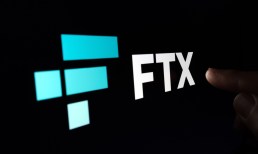When a customer steps up to the checkout counter, whether physically or virtually, the payment options available are highly dependent on who the merchant is, the items being purchased, the consumer’s financial profile and myriad other factors that retailers need to be cognizant of in order to ensure the transaction is completed.
For this reason, JCPenney Chief Information Officer Melissa Pint said in a PYMNTS TV segment with Karen Webster, the retailer has always seen payments as “a very big part of the retail experience,” aiming to make the consumer experience easy, frictionless and secure.
“We try to ground ourselves in what the customer needs, and that’s where I think it’s still such a powerful tool, as well as all the different payment options we accept,” Pint said.
Even if a customer picks buy now, pay later (BNPL) once, she said, “they will move onto other forms of payment at different points depending on their purchase.”
JCPenney, for example, has a partnership with Synchrony for a store credit card as well as a partnership with PayPal to facilitate consumer payments.
“We’re not necessarily preferential to any one,” Pint said. “We want to meet the customer where they are.”
Advertisement: Scroll to Continue
Pint told Webster that although most customers currently pay with debit and credit cards, “all retailers, especially in the digital age, need to be looking at alternatives … and making sure that they’re the right options for our customer base.”
BNPL, she added, is something that many customers have been asking about, and JCPenney will likely have an announcement “later this year … of how we plan to meet that need.”
“As new payment options come on the market, that is something we want to embrace because I think all customers today want to transact in a way that’s meaningful to them, that makes them feel comfortable with their spending habits,” Pint said.
Rebuilding Credit
Part of a retailers’ responsibility, Pint said, is helping provide consumers with “sound, healthy … well-vetted” payment options. PYMNTS research conducted in collaboration with Sezzle shows that 23% of American retail consumers need a “second chance” to fully participate in the marketplace. Many are financially stable but may have blemishes on their credit profiles that hinder their ability to easily access credit. Importantly, 59% are very or extremely interested in taking steps to improve their credit scores.
Read more: 77% of Credit-Challenged Consumers Favor BNPL for Spend Management
Sezzle CEO Charlie Youakim told Webster that Sezzle initially had no impact on a consumer’s credit score, doing no damage but providing no help before the company “thought about the long road.”
“If I had a kid that was 18 years old, I’d want to get them into credit building,” Youakim said. “And if that’s the case, why aren’t we doing that with our own customers?”
Consumers can still use Sezzle with no hit to their credit, but the platform also offers Sezzle Up, which reports a person’s usage in order to help them increase credit scores, “in some cases dramatically,” Youakim said.
Because of the nature of BNPL, Sezzle can start consumers off with a low line of credit, allowing them to make one or two purchases and prove that they’ll pay for their purchases.
“If you have a bankruptcy, it’s on your credit file for seven years, but you might have fixed it,” Youakim said. “You might’ve realized that you really needed to turn things around, and with a product like ours, you can do that within a year.”
Going From 0 to 60
As consumers start to think about BNPL as a more general-purpose payment method to pay for lots of different purchases at a range of price points, Youakim said Sezzle has been testing different verticals — including a shift to support long-term installment plans.
With Ally Financial, for example, Sezzle now offers the ability to purchase up to $40,000 with installments over five years.
See also: BNPL Firm Sezzle Allies With Ally Lending to Expand Loan Options
“Now we’re a one-stop-shop for the enterprise retailer that wants to offer this,” Youakim said. “And I think it’s going to be the way that companies are going to be heading toward in this buy now, pay later space. You really have to have wider support than just a narrow-focused [average order value (AOV)] product.”
Youakim also said consumers who use BNPL “get excited about the product and they actually look for the retailers they can utilize the product with.”
“We essentially have a virtual mall that a customer can walk into and look at different storefronts and explore different stores, which I think is fun for the customer,” Youakim said. “And it creates opportunities for the retailers.”



